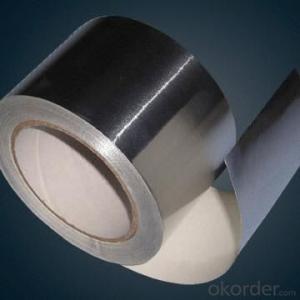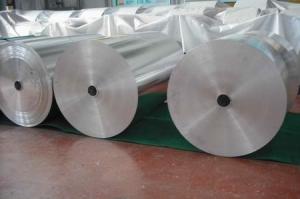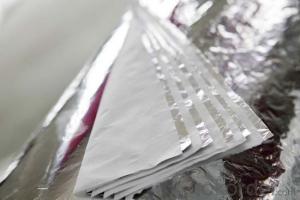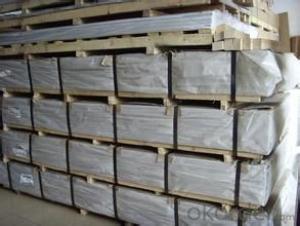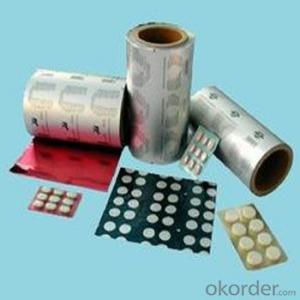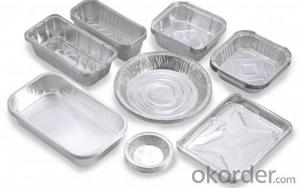Aluminum Foil Sheet
Aluminum Foil Sheet Related Searches
Led Light Bulbs For Ceiling Fixtures Led Lamps For Ceiling 42 In Ceiling Fan With Light Aluminum Coil Stock For Gutters Aluminum Foil For The Grill Hole Saw For Aluminum Plate Aluminum Tread Plate For Trailer Bow Plate For Aluminum Boat Aluminum Foil For Grow Room Aluminum Foil For Joint PainHot Searches
Stock Price For Aluminum Aluminum Coil Stock For Sale Aluminum Gutter Coil For Sale Used Aluminum Scaffolding For Sale 1/4 Aluminum Plate For Sale Aluminum Bar Stock For Sale Aluminum Round Stock For Sale Aluminum Diamond Plate For Sale Aluminum Scaffolding For Sale Craigslist 6061 Aluminum Plate For Sale Aluminum Dock Plate For Sale 7075 Aluminum Plate For Sale Aluminum Tread Plate For Sale Aluminum Checker Plate For Sale Aluminum Plate For Sale Near Me Plate Aluminum For Sale Aluminum Plate For Sale Aluminum Square Stock For Sale Aluminum Flat Stock For Sale Billet Aluminum Stock For SaleAluminum Foil Sheet Supplier & Manufacturer from China
Okorder.com is a professional Aluminum Foil Sheet supplier & manufacturer, offers integrated one-stop services including real-time quoting and online cargo tracking. We are funded by CNBM Group, a Fortune 500 enterprise and the largest Aluminum Foil Sheet firm in China.Hot Products
FAQ
- Yes, aluminum sheets can be perforated for both decorative and functional purposes. Perforating aluminum sheets involves creating a pattern of holes or perforations in the metal surface. These perforations can serve various purposes depending on the specific application. For decorative purposes, perforated aluminum sheets are commonly used in architecture and interior design. The patterns of holes can add visual interest and create unique designs, allowing for the play of light and shadow. It can be used for decorative screens, partitions, facades, and ceiling panels, among other applications. Perforated aluminum sheets offer versatility in design, as different hole sizes, shapes, and arrangements can be used to achieve the desired aesthetic effect. In terms of functional purposes, perforated aluminum sheets provide several advantages. Firstly, they can improve airflow and ventilation in applications such as HVAC systems, air-conditioning units, and speaker grilles. The perforations allow air to pass through while still maintaining the structural integrity of the sheet. Secondly, perforated aluminum sheets can be used for sound absorption and noise reduction. The holes in the sheet disrupt sound waves, reducing noise levels in areas such as auditoriums, concert halls, and industrial facilities. Additionally, perforated aluminum sheets have practical applications in filtration and separation processes. They can be used as screens or sieves to separate particles of different sizes, allowing for the filtration of liquids or gases. These sheets are also used in the manufacturing of various industrial equipment, such as vibrating screens, grain dryers, and centrifuges. In summary, aluminum sheets can indeed be perforated for both decorative and functional purposes. Whether it is to enhance the visual appeal of a space, improve airflow, reduce noise levels, or aid in filtration processes, perforated aluminum sheets offer a versatile solution for a wide range of applications.
- Yes, aluminum sheets can be used as heat shields in appliances. Aluminum is a good conductor of heat, making it an effective material for dissipating and reflecting heat away from sensitive components in appliances. Additionally, aluminum is lightweight, durable, and has good corrosion resistance, making it a suitable choice for heat shield applications in various appliances.
- To ensure the dimensional accuracy of aluminum sheets, several steps can be taken: 1. Precise Manufacturing Process: The aluminum sheets should be manufactured using advanced equipment and techniques that guarantee accurate dimensions. This involves using reliable and calibrated machinery to ensure the sheets are cut, rolled, and formed precisely to the desired specifications. 2. Quality Control Measures: Implementing a comprehensive quality control system is crucial in maintaining dimensional accuracy. This involves regular inspections and measurements at various stages of the manufacturing process to identify any deviations from the required dimensions. This can be done using precision measuring instruments such as calipers, micrometers, or laser scanning devices. 3. Material Selection: The quality of the aluminum used in sheet production plays a significant role in dimensional accuracy. Using high-quality aluminum with consistent properties and minimal impurities ensures that the sheets maintain their desired dimensions throughout the manufacturing process. 4. Temperature Control: Aluminum sheets can be sensitive to temperature variations, which can cause expansion or contraction and affect dimensional accuracy. Maintaining a controlled temperature environment during manufacturing helps minimize these effects and ensures the sheets retain their intended dimensions. 5. Proper Handling and Storage: Aluminum sheets should be handled and stored with care to prevent any deformation or damage that could impact their dimensions. This includes using appropriate lifting equipment, avoiding excessive bending or twisting, and storing them in a controlled environment to prevent exposure to moisture or extreme temperatures. 6. Regular Calibration: It is essential to regularly calibrate the measuring instruments used in the dimensional inspection process. This ensures accurate measurements and eliminates any potential errors that may arise from instrument drift or wear. By following these steps, manufacturers can minimize dimensional variations and maintain the desired accuracy of aluminum sheets, meeting the specific requirements of various applications in industries such as automotive, aerospace, construction, and electronics.
- Aluminum sheets are tested for quality and compliance with industry standards through various methods such as visual inspection, dimensional measurements, mechanical tests, and chemical analysis. Visual inspection involves checking for surface defects, scratches, and discoloration. Dimensional measurements ensure that the sheets meet the required thickness, width, and length specifications. Mechanical tests assess the strength, hardness, and ductility of the aluminum sheets through techniques like tensile testing and impact testing. Chemical analysis involves determining the chemical composition and purity of the sheets, ensuring they meet the required standards. Overall, these comprehensive testing methods ensure that aluminum sheets adhere to industry quality standards.
- Aluminum sheets are not effective in terms of sound insulation due to their low mass and high density, which allows sound waves to easily pass through them.
- A construction worker uses a steel tape to measure the length of an aluminum support column. If the measured length is 17.7 m when the temperature is 21.2°C, what is the measured length when the temperature rises to 35.4°C? (Note: Do not neglect the expansion of the steel tape. Give your answer to three decimal places.)I am really confused... Could someone solve it for me with a step-by-step explanation? Thank you so much.
- Aluminum cases offer better heat control than steel cases. Heat generating from the motherboard is absorbed by the case and then dissipated to the air. Aluminum dissipates heat better than steel. As for your question regarding ATX cases, have you tried using the barebone kits from Shuttle? Shuttle uses small form factor(i.e. small footprint). They are roughly the size of a shoe box.
- In high-pressure environments, aluminum sheets are generally unsuitable due to their relatively low strength-to-weight ratio compared to other materials. Consequently, there is a potential for deformation or failure under high pressure, posing safety risks. Moreover, aluminum's structural integrity is further compromised in these situations due to its relatively low melting point. Therefore, materials like steel or titanium, which offer greater strength and resistance to deformation, are typically preferred in such environments.
- why does the hardness of 2024 aluminum sheet not increase but decrease after thermal treatment?
- The hardness of 2024 aluminum sheet will decrease after thermal treatment(solution treatment), and it will increase after aging treatment.



















